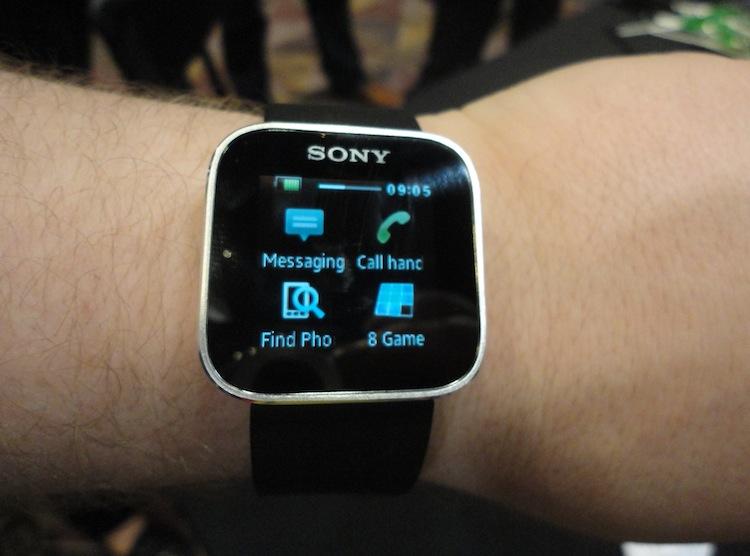
In recent years, we've watched smartphones undergo some pretty radical changes. In comparison to devices from 2009 and 2010, current Android smartphones and the iPhone 4S are better in almost every way – they're bigger, faster, more powerful, more efficient and more capable.
That said, with the current direction of OEMs, smartphone development has sort of hit a ceiling. Devices are beginning to look more and more alike with every launch. Most of them are black or white rectangular devices with fewer and fewer buttons. The only true differentiation is done internally, and even the guts of today's smartphones are minimally varied. Adding more cores and bumping the processor clock speed only matters to a certain point; mobile cameras in their current state can only be improved so much; and mobile display technology will soon max out. The only pieces of the puzzle left are internal memory (RAM and ROM) and battery technology. Motorola hit the nail on the head with the DROID RAZR MAXX; here's to hoping others can take a hint.
What all of this means, though, is OEMs will be looking in other areas – thinking outside the box, literally – to improve their line of devices. As I've covered several times now, both Google and Apple are fueling a lot of resources into research and development for external devices that can be worn – as clothing, a watch, glasses, etc. Motorola jumped on that bandwagon early, too, with MOTOACTV. And at CES, there were "smart" accessories galore.
The question is: which smart accessory appeals to you the most?
I don't know what it is, but there is something about these connected, smart accessories that really intrigue me. I love and want to try them all. But realistically, that isn't going to happen.
At CES, I got some hands-on time with the Sony SmartWatch. Twice, actually. And to be honest, it's exactly what I was hoping a SmartWatch wouldn't be. On-screen controls were clunky, the display was mediocre and it was made of cheap, lightweight plastic. However, there are a few companies I have my eye on when it comes to watches with a little more oomph.
Easily one of the most intriguing companies dabbling in "wrist-based companions" is WIMM Labs. Their developer preview kit can currently be purchased on Amazon for $199, which will entail a 1-inch by 1-inch standalone device powered by Android. But this device is just the beginning – the developer preview kit. More and more wrist-worn devices will come and will run this customized version of Android, and that's what I will be drooling over. I have watched and read several WIMM One reviews and I am fairly impressed with first version software and hardware.
While Sony's latest mobile efforts and attempt at a watch was not what many of us were hoping for and may soon be forgotten in a sea of high-end smartphones and smart watches, they did have two other smart accessories to announce, both of which are interesting. Xperia SmartTags are NFC-enabled tags that can change the settings of a smartphone with a quick NFC scan. One example given was having a SmartTag hanging from the rear view mirror in a car. Simply sit down in the card, tap the card with the phone and navigation will load, automatically enabling the GPS radio and Bluetooth. These SmartTags could be customized, so says Xperia Blog. The other accessory is the Smart Wireless Headset Pro. It's a Bluetooth 3.0 headset that functions just as your typical headset would by allowing you to answer calls and it will read incoming text messages to you. But it also has a two-line display that allows you to remotely access your calendar alerts, and with 2GB built-in storage and a microSD card slot, it functions as an MP3 player. In other words it's a Bluetooth headset on steroids.
One of the most intriguing devices on the horizon, though, is the rumored Google Glasses that were outed earlier this week. 9to5Google claims that Google's Terminator-style HUD glasses will debut sometime in the near future. Resembling Oakley Thump glasses, the Google Glasses will only have one lens that displays information (which is not transparent) and user navigation will be controlled by head-tilting. We learned early last month that several other companies are working on smart glasses, too. Vuzix has a pair that currently retail for $4,999.00, and Motorola and Kopin Co. also showed off the Golden-i headset, a fully-functional "mobile PC" that is worn on the head and has an adjustable single-eye display.
All of these things have me kind of worked up and excited, if only just to see what actually makes it to market and how well-received they will be. But what I'm looking forward to most is a little more basic and simple. I've recently been on a fitness and health kick, and I want a better way to track my fitness. What I want right now is the Nike+ FuelBand. But unlucky me, I missed out on the initial pre-order and will have to wait until they come back into stock. The Nike+ FuelBand tracks your calories burned and helps you keep tabs on your workouts via Web or smartphone. It will launch later this month.
Tell me, ladies and gents. Which smart accessory has you most excited? Intrigued? Personally, I want to try out some smart glasses. But I figure something like the Nike+ FuelBand is a little more practical and something I would use more frequently. Who knows, maybe it will motivate me to lose a few pounds. Sound off below and tell us which accessory you want, or let me know if there's a cool one coming that I've managed to overlook.